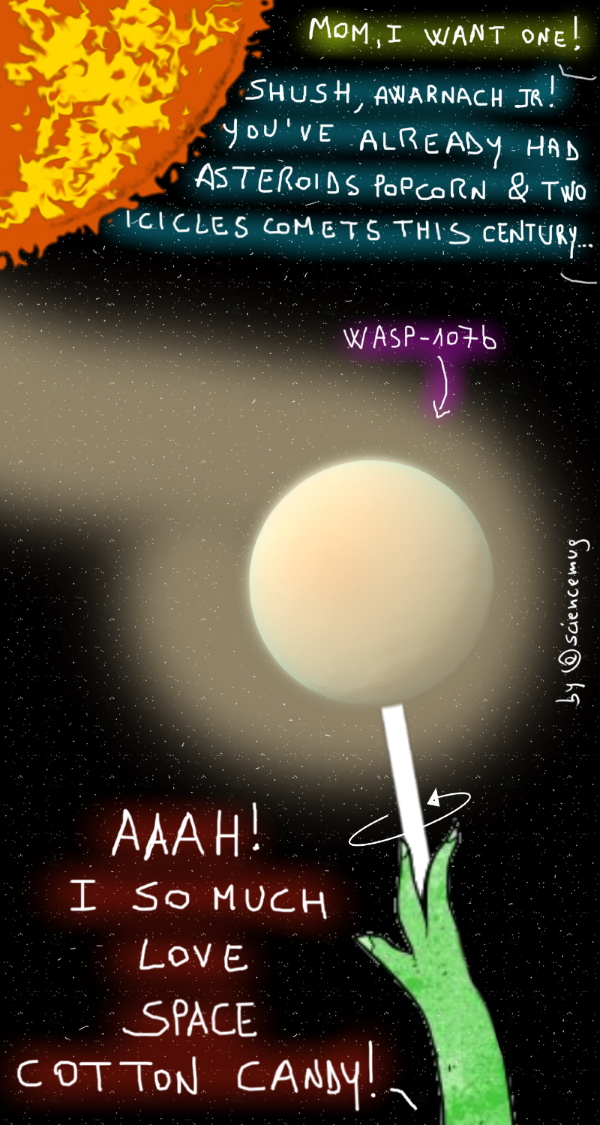A bunch of astronomers, after a four years long survey, found an exoplanet, orbiting very close to its star, that has an "extraordinarily low density" (P). It has, indeed, a mass 1.8 times that of Neptune, but a Jupiter like radius (and Jupiter radius is almost 6 times bigger than Neptune's one).
The fluffy planet, which discovery is described in a paper (P) published on The Astronomical Journal, is in the WASP-107 system, and it's called WASP-107b.
WASP-107b's super low density puzzles the astro-brains, 'cause the planet has a core mass smaller than 4.6 times the mass of Earth, that is "significantly lower than what is traditionally assumed to be necessary to trigger massive gas envelope accretion" (P) - meaning WASP-107b shouldn't exist, 'cause its small "seed" shouldn't have been able to attract enough gas and dust to eventually form, well, WASP-107b -.
The researchers have one possible explanation: the planet formed far from its star, in a region of space where the gas is cold enough so that the small core mass could attract it and grow a planet around itself very fast. Then, the fully formed WASP-107b migrated toward the inner part of the system, possibly influenced by the second more massive planet, with "a wide eccentric orbit" (P), detected by the astronomers in the same system.
But this dumb blog, pals, has a different idea on the reason why the fluffy planet is up there. Check out the following cartoon, and you'll find out what it is.
 |
| "Space candy cotton"-WASP-107b exoplanet (by @sciencemug) |
Bibliography (P)
P - Piaulet, C., Benneke, B., Rubenzahl, R.A., Howard, A.W., Lee, E.J., Thorngren, D., Angus, R., Peterson, M., Schlieder, J.E., Werner, M., et al. (2021). WASP-107b’s Density Is Even Lower: A Case Study for the Physics of Planetary Gas Envelope Accretion and Orbital Migration. AJ 161, 70.
